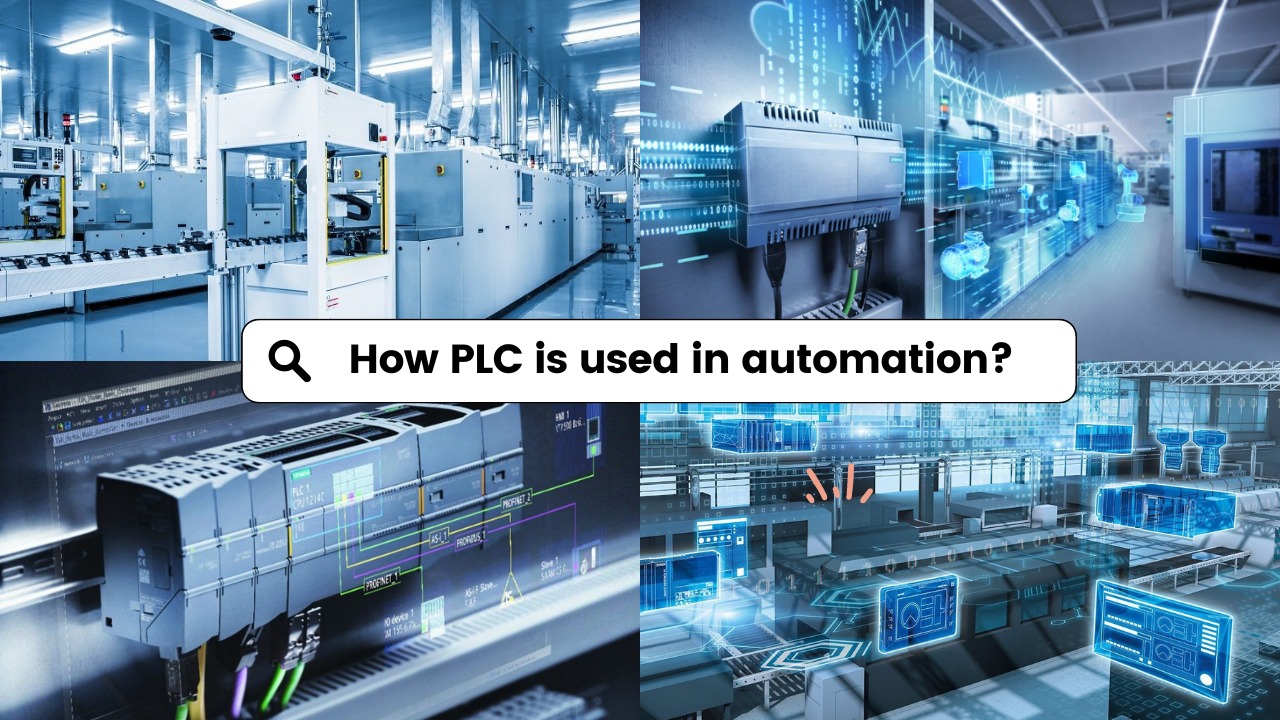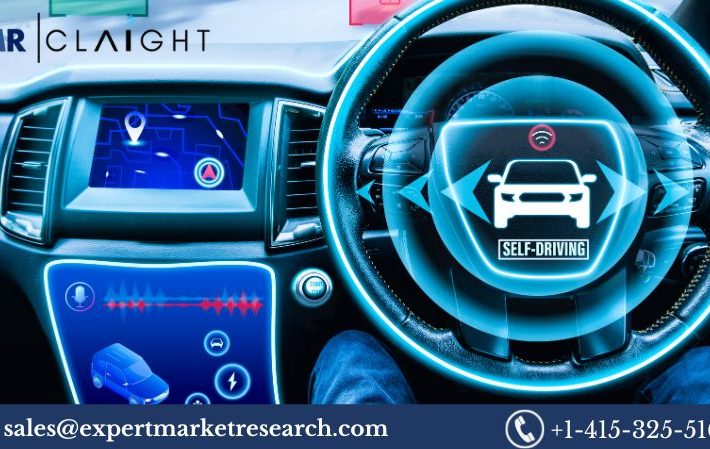PLCs (Programmable Logic Controllers) are widely used in automation to regulate and observe machines and industrial operations. They offer a dependable and adaptable way to automate difficult processes. The following are some significant applications for PLCs in automation:
Control of Industrial Processes:
Numerous industrial operations, such as production, assembly lines, chemical reactions, water treatment, and others are managed by PLCs. PLCs take information from a variety of sensors and devices as inputs, process it using programmed logic, and provide outputs to operate actuators, motors, valves, and other devices. Critical parameters are monitored and controlled by PLCs, which guarantee the process will run precisely and efficiently.
- Monitoring and Feedback: PLCs continuously receive information about process variables including temperature, pressure, level, flow rate, and location through inputs from sensors, switches, and other devices. The PLC is able to assess the process’s state right now and choose the best course of action for control thanks to this real-time feedback.
- Control Logic: PLCs carry out control logic in accordance with pre-programmed directives. The rules, circumstances, and algorithms that specify how the process should run are defined by the control logic. To apply the intended control strategy, it makes use of inputs, outputs, timers, counters, mathematical calculations, and decision-making statements.
Sequential Control :
Sequential control, in which a number of stages or actions must be carried out in a precise order, is a task that PLCs are excellent at executing. The timing and synchronisation of various actuators and devices can be coordinated by using PLCs to programme and carry out sequences of actions. This capacity is critical in applications like packing, material handling, and conveyor systems where exact synchronisation is required.
- Programming: Sequential control logic is defined in PLCs using specialised programming languages such ladder logic, function block diagrams, or structured text. The process of programming is writing a series of instructions that outline the ideal progression of the events, circumstances, and tasks to be carried out.
- State Diagrams: State machines or state diagrams are frequently used by PLC programmers to visually describe the sequential control logic. State diagrams show several system states or circumstances as well as how the system changes between them in response to inputs, timers, or other events. PLC programming languages offer features for efficiently implementing state-based reasoning.
Safety Systems:
PLCs are essential for creating safety systems that safeguard personnel and machinery. To ensure safe operation, they can keep an eye on emergency stop buttons, safety sensors, and interlocks. PLCs can also work in conjunction with safety tools like emergency alarms, light curtains, and safety switches to activate the proper responses and stop dangerous processes as needed.
- Safety Sensors and Devices: Emergency stop buttons, safety switches, light curtains, safety mats, interlocks, and safety scanners are just a few examples of the safety equipment that PLCs interface with. To help the PLC identify potentially dangerous circumstances or harmful conditions, these devices give inputs.
- Safety Logic Programming: Safety logic is created by PLCs using specialised programming languages and safety-related standards (such IEC 61508 or IEC 62061). Algorithms and instructions make up safety logic, which decides what actions to do in response to dangers or safety occurrences. Emergency stops, machine guarding, limit monitoring, and defect detection are all defined by this logic.
- Safety Relays and Safety I/O Modules: To handle safety-related signals apart from ordinary I/O, PLCs can be fitted with special safety relays or safety I/O modules. To guarantee dependable safety operation, these devices offer redundancy, diagnostic capabilities, and fail-safe functionality.
Data Acquisition and Monitoring:
Real-time data collection by PLCs from sensors and devices offers insightful information about the efficiency of the process. For the purposes of process optimisation, quality assurance, maintenance scheduling, and system improvement overall, this data can be logged, examined, and used. For visualisation and analysis, PLCs can transmit this data to supervisory systems, HMIs, or higher-level control systems.
- Sensor Integration: PLCs can communicate with a wide range of sensors, including flow metres, level sensors, pressure transmitters, temperature sensors, and more. The PLC can precisely monitor and operate the system thanks to these sensors’ real-time data on the process variables.
- Analog and Digital Inputs: Both analogue and digital signals can be handled by PLCs. Digital inputs handle discrete signals like switches or binary states, whereas analogue inputs record continuous values like temperature or pressure readings. These signals are converted by PLCs into a digital format that can be analysed and used for monitoring and control functions.
Communication and Integration:
PLCs are made to interact and communicate with other devices and automation systems. They can be integrated with manufacturing execution systems (MES), distributed control systems (DCS), supervisory control and data acquisition (SCADA) systems, and other control networks. This makes it possible to centrally monitor and manage numerous PLCs throughout an entire plant or facility.
- Device-level Communication: PLCs have a broad range of device or field communication capabilities. This includes input/output devices such as sensors, switches, actuators, motor drives, and others. Modbus, Profibus, DeviceNet, EtherNet/IP, and other communication protocols are supported by PLCs, making it possible to connect to and exchange data with these devices with ease.
Flexibility and Programmability:
High levels of flexibility and reconfigurability are provided by PLCs. Engineers and technicians can readily adjust and adapt control schemes as needed thanks to their programming languages, such as ladder logic or structured text. This adaptability is especially useful in settings where processes change often or where new automation needs arise.
Overall, PLCs are fundamental components in automation systems, providing control, monitoring, safety, and data acquisition capabilities. Their versatility, reliability, and ability to interface with diverse devices make them indispensable for optimizing industrial processes and improving productivity.







Leave a comment
Your email address will not be published. Required fields are marked *